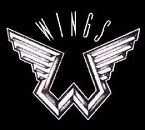warspite1
Posts: 41353
Joined: 2/2/2008
From: England
Status: offline

|
September 1939 (The Royal Navy)
The Royal Navy was, on paper, still the largest navy in the world in September 1939. However, scratch the surface and it was clear – and certainly with hindsight – that there were serious shortcomings in many areas. These problems were caused by a mixture of a lack of money and some poor decision making. This resulted in:
- The size of the fleet was too small given all its objectives and the mix of enemies that were soon to be arrayed against it.
- The composition of the fleet (far too many elderly warships for which there was not the money or resources to update) and a lack of specialist escort vessels to protect the vital sea lanes.
- The RAF being given control of the naval air forces between the wars which meant that development of carrier-borne aircraft was given very low priority.
- Too much faith placed in the ASW measures and the ability of ASDIC to defeat the U-boat.
That said, the RN did still have a large, well trained navy, an extensive base network, some excellent commanders in the finest Nelsonian tradition, some very good equipment and not least, its proud history (which meant that its enemies sometimes paid it a respect sometimes unwarranted by the hardware it had available).
We shall look more closely at the various ship classes as the thread develops, but have in mind that many of the ships were little changed from WWI (for example (but not limited to) the R-class battleships, most of the C,D and E-class cruisers) and that when describing four of the seven aircraft carriers as CV and not CVL, that is pushing the definition somewhat….
The fact is the officers and men of the Royal Navy often achieved what they did in WWII in spite of their equipment – not always because of it!
Royal Navy in September 1939
First Lord – Winston Churchill (Civilian appointment)
First Sea Lord – Admiral of the Fleet Sir Dudley Pound (The Chief of Naval Staff*)
*Note that the Admiralty, unlike the War office (Army) and Air Ministry (Royal Air Force) was an operational command. Thus Pound had the same “advisor” role as the Chief of the Imperial General Staff and the Chief of the Air Staff, but was also responsible for maritime Operations around the world. Tough assignment!
The Royal Navy operated a number of fleets and commands in September 1939 – and there were some amendments made to these during the war (key ones noted below):
- The Home Fleet
The Home Fleet was naturally the largest and most important of the commands, although there were also a number of sub commands in the UK:
- Humber Force: Based in the Humber (East Coast of England)
- Channel Force: Based in Portland (South Coast of England)
- Reserve Fleet: Based in Portsmouth
In addition there were the following naval shore commands:
- Rosyth (HQ Rosyth)
- Western Approaches (HQ Plymouth – later moved to Liverpool)
- Portsmouth (HQ Portsmouth)
- The Nore (HQ Chatham)
Note: additional commands Orkneys and Shetland (HQ Kirkwall) and Dover (HQ Dover) were added shortly after the outbreak of war
These commands were provided with the light forces necessary for defence, ASW and minesweeping duties required as and when necessary.
The overseas fleets and commands:
- The Mediterranean Fleet (HQ at Malta)
- The North Atlantic (HQ at Gibraltar)
- The South Atlantic (HQ Freetown – Sierra Leone)
- The China Station (HQ Hong Kong)
- The East Indies Station (HQ at Trincomalee)
- The America and West Indies Station (HQ Bermuda)
- Australia (Sydney)
- New Zealand (Auckland)
So where were the ships at the outbreak of war?
Note:
BB - Battleship
BC - Battlecruiser
CV - Fleet Carrier
CVL - Light Carrier
CVE - Escort Carrier
CA - Heavy Cruiser
CL - Light Cruiser
CLAA - Anti-aircraft Cruiser
DD - Destroyer
DE - Destroyer Escort
SS - Submarine
The Home Fleet (Admiral of the Fleet Charles Forbes)
5 x BB: Nelson, Rodney, Royal Oak, Royal Sovereign and Ramillies
2 x BC: Hood and Repulse
2 x CV: Ark Royal and Furious
1 x CA: Effingham*
13 x CL: Aurora, Belfast, Caledon*, Calypso*, Cardiff*, Delhi**, Diomede*, Dragon*, Dunedin*, Edinburgh, Emerald*, Enterprise** and Sheffield
1 x CLAA: Calcutta
17 x DD of the 6th and 8th Destroyer Flotillas
16 x SS of the 2nd and 6th Submarine Flotillas
7 x Minesweepers of the 1st Minesweeping Flotilla
Netlayer: Guardian
Monitor: Erebus
*These cruisers, of the 7th and 12th Cruiser Squadrons, were allocated to the Northern Patrol (see post 45).
**Delhi and Effingham are mentioned in some sources as part of the Northern Patrol but not in others. Both appear to have patrolled during September.
Humber Force (Admiral Frederick Edwards-Collins)
2 x CL: Southampton and Glasgow
9 x DD of the 7th Destroyer Flotilla
2 x Minesweepers
Channel Force (Vice Admiral Lancelot Holland)
2 x BB: Resolution and Revenge
2 x CV: Courageous and Hermes
1 x CLAA: Cairo
2 x CL: Caradoc and Ceres
5 x DD of the 18th Destroyer Flotilla
Nore Command (Admiral Henry Brownrigg)
9 x DD of the 19th Destroyer Flotilla
6 x Minesweepers
9 x Minesweeping Trawlers
Portsmouth (Admiral William James)
8 x DD of the 16th Destroyer Flotilla
4 x DD unattached
4 x Minesweepers
4 x Minesweeping Trawlers
5 x ASW Trawlers
Western Approaches (Admiral Martin Dunbar-Naismith)
32 x DD of the 3rd, 11th, 12th and 17th Destroyer Flotillas
3 x Minesweeping Trawlers
3 x ASW Trawlers
6 x Escort Vessels
Rosyth (Admiral Charles Ramsey)
8 x DD of the 15th Destroyer Flotilla
8 x Escort Vessels
Mediterranean Fleet (Admiral Andrew Cunningham)
3 x BB: Warspite, Barham and Malaya
1 x CV: Glorious
3 x CA: Devonshire, Shropshire and Sussex
3 x CL: Arethusa, Galatea and Penelope
1 x CLAA: Coventry
9 x DD of the 1st Destroyer Flotilla
9 x DD of the 2nd Destroyer Flotilla
8 x DD of the 4th Destroyer Flotilla
5 x DD Part of the 21st Destroyer Flotilla
4 x Escort Vessels
Submarine Depot Ship: Maidstone
10 x SS of the 1st Submarine Flotilla
Netlayer: Protector
Minelayer: Medusa
5 x Minesweepers of the 3rd Minesweeping Flotilla
Repair Ship: Resource
12 x MTB of the 1st MTB Flotilla
Depot Ship: Vulcan
North Atlantic Command (Rear-Admiral Norman Wodehouse)
2 x CL: Colombo and Capetown
9 x DD of the 13th Destroyer Flotilla
2 x SS
2 x Minesweepers
China Station (Admiral Percy Noble)
1 x CV: Eagle
3 x CA: Cornwall, Dorsetshire and Kent
1 x CL: Birmingham
4 x DD Part of the 21st Destroyer Flotilla
6 x DD unattached
5 x Escort Vessels
Submarine Depot Ship: Medway
15 x SS
Minelayer: Redstart
Monitor: Terror
6 x MTB of the 2nd MTB Flotilla
20 x River gunboats
America and West Indies Station (Vice-Admiral Sydney Meyrick)
1 x CA: Berwick
3 x CL: Orion, York and Perth (RAN)
2 x Escort Vessels
East Indies Station (Rear Admiral Ralph Leatham)
3 x CL: Gloucester, Liverpool and Manchester
7 x Escort Vessels (5 of which were Royal Indian Navy)
South Atlantic Command (Vice-Admiral George d’Oyly Lyon)
2 x CA: Cumberland* and Exeter*
6 x CL: Ajax*, Danae, Dauntless, Despatch, Durban and Neptune
4 x DD Part of the 2nd Destroyer Flotilla
2 x SS
Escort Vessels: 4
Seaplane Carrier: Albatross
Note: The South American Division came within this command – initially made up of those marked with an *.
Royal Australian Navy
2 x CA: Australia and Canberra
3 x CL: Adelaide, Hobart and Sydney
5 x DD
2 x Escort Vessels
Royal Canadian Navy
6 x DD
New Zealand Division of the RN
2 x CL: Achilles and Leander
2 x Escort Vessels
Reserve Fleet (Vice Admiral Max Horton)
2 x CA: Hawkins and Frobisher
1 x CV: Argus
Minelaying cruiser: Adventure
5 x DD
10 x Minesweepers
Seaplane Carrier: Pegasus
Other (Not sure where based)
Cadet Training Cruiser: Vindictive
Depot Ship: Alecto
8 x SS of the 5th Submarine Flotilla (training)
8 x Survey Ships
5 x Motor A/S boats of the 1st Flotilla
Ships undergoing refits and repairs
2 x BB: Queen Elizabeth and Valiant
1 x BC: Renown
3 x CA: London, Norfolk and Suffolk
1 x CL: Newcastle
3 x CLAA: Carlisle, Curlew and Curacoa
Ships under construction in September 1939*
5 x BB: King George V, Prince of Wales, Duke of York, Anson and Howe
6 x CV: Illustrious, Victorious, Formidable, Indomitable, Implacable and Indefatigable
9 x CL: Ceylon, Fiji, Gambia, Jamaica, Kenya, Mauritius, Nigeria, Trinidad and Uganda (Note: Bermuda and Newfoundland were laid down in November)
10 x CLAA: Bonaventure, Charybdis, Cleopatra, Dido, Euryalus, Hermione, Naiad, Phoebe, Scylla and Sirius. (Note: Argonaut was laid down in November)
32 x DD
11 x SS
56 x Escort Vessels
20 x DE
4 x Cruiser Minelayers
20 x Minesweepers
20 x Minesweeping Trawlers
*This does not include additional vessels ordered under the 1st Emergency War Programme during September.
Sources:
On Seas Contested (O’Hara/Dickson/Worth)
The War at Sea 1939-45 (Roskill)
www.naval-history.net
Conways All The World’s Fighting Ships 1922-1946
Note that given the sources above you would expect the above to be definitive. However, whilst the capital ships are easily cross referenced, getting a consensus on many of the smaller vessels is almost impossible. The official history for example had no mention of the monitor Erebus or the light cruiser Newcastle?? Using Naval History as a further tool I have been able to fill in some of the blanks and as far as I can tell I have all the named ships - and in the right places. There are 4 submarines and 22 destroyers unaccounted for. I suspect that many of these were in refit/repair in September 1939.
< Message edited by warspite1 -- 5/20/2015 12:01:38 PM >
_____________________________
England expects that every man will do his duty. Horatio Nelson October 1805  |
 Printable Version
Printable Version











 So rather than hold things up I will move onto the Poles and then the Germans after. I will get back to the French if I ever understand what the hell I am writing about
So rather than hold things up I will move onto the Poles and then the Germans after. I will get back to the French if I ever understand what the hell I am writing about 

















 New Messages
New Messages No New Messages
No New Messages Hot Topic w/ New Messages
Hot Topic w/ New Messages Hot Topic w/o New Messages
Hot Topic w/o New Messages Locked w/ New Messages
Locked w/ New Messages Locked w/o New Messages
Locked w/o New Messages Post New Thread
Post New Thread